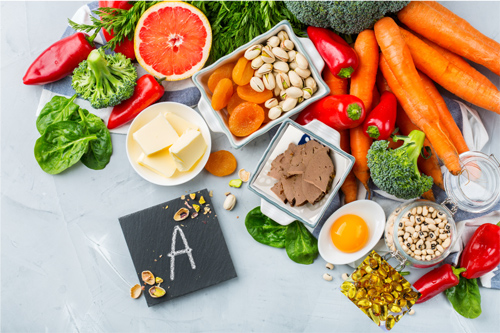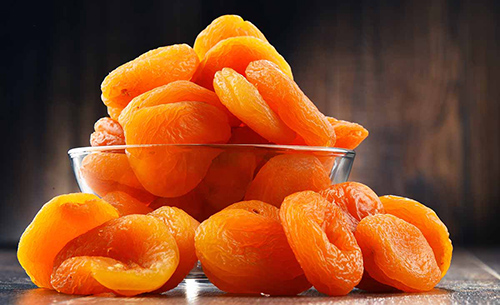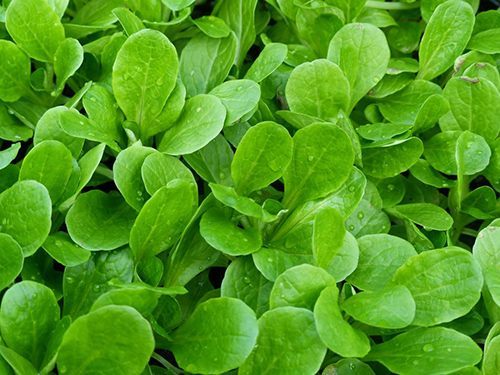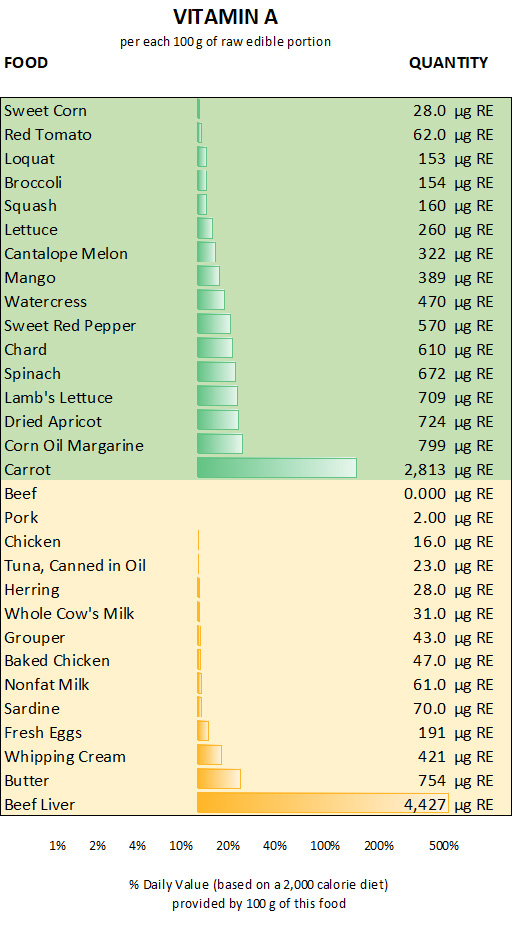
What is vitamin A? What are the sources of vitamin A? These are the top two questions many people ask daily about this all-important vitamin. This vitamin is involved in numerous bodily processes.
The function of vitamin A:

vision, growth, bone and tooth development, maintenance of the health of the skin and mucosa, and protection against cancer. Also, carotenes and carotenoids are antioxidants that protect the heart and arteries.
Chemical composition of vitamin A: two substances are included under the name vitamin A:
- Vitamin A itself: retinol and dehydroretinol. They are found in animal-based foods. In large amounts, they are toxic.
- Provitamin A: carotenes and similar substances called carotenoids. There are about ten different carotenes, the most active of which is beta-carotene. They transform to vitamin A in the intestine, answering the body’s needs and presenting no risk of toxicity.
- High Potency: 10,000 IU per single softgel. Supports Healthy Vision & Immune Health.*
- Superior Quality: Laboratory tested Non-GMO. In-house tested in our state-of-the-art cGMP registered New York facility.
- Trusted Since 1960: The pioneers of Bronson Vitamins were a group of pharmacists who witnessed the benefits of vitamins and mineral supplementation firsthand with their patients. Bronson Vitamins have been consistently mentioned by top medical professionals since our inception in 1960.
Sources of vitamin A

- Vitamin A (retinol): Animal liver and milk fat are the richest sources of vitamin A.
- Provitamin A (carotenes and carotenoids): all red and orange vegetables, particularly carrots and peppers, and some dark green spinach.
- Units of measurement: the amount of active vitamin A in foods is measured in micrograms of retinol equivalent (µg RE).
- 1 µg RE= 1 µg of retinol = 6 µg of beta carotene = 12 µg of other carotenoids = 3.33 IU of vitamin A = 10 IU of carotenes 1 IU of vitamin A = 0.3 µg RE
Plant-based foods provide more vitamin A than animal products without the risk of over-accumulation and toxic effects.
Vitamin Deficiency Symptoms:
Vision disorders, dry skin, and fetal developmental disorders.
Increased need:
Growth periods (children and adolescents), pregnancy, and nursing.
Loss during the processing of foods:
15% to 35% of the vitamin A is lost through cooking. Dehydration and exposure to light, remarkably ultraviolet light, destroy vitamins and vitamin A. Freezing has little effect on vitamin A.
Top Vitamin A Sources

DISCLAIMER: All content on this website is presented solely for educational and informational objectives. You should not rely on the information provided as a replacement for advice, diagnosis, or treatment from a qualified medical expert. If you are pregnant, nursing, or have any preexisting medical concerns, you should talk to your doctor before using any herbal or natural medicines.
REFERENCES
- George D. Pamplona-Roger, M.D. “Encyclopedia of Foods and Their Healing Power.” George D. Pamplona-Roger, M.D. Encyclopedia of Foods and Their Healing Power. Trans. Annette Melgosa. Vol. 1. Chai Wan: Editorial Safeliz, 2005. 389. Print. [sources of vitamin A]
- National Institutes of Health: Office of Dietary Supplements – Vitamin A: https://ods.od.nih.gov/factsheets/VitaminA-HealthProfessional/
- World Health Organization: Global Database on Vitamin A Deficiency: https://www.who.int/publications-detail-redirect/WHO-NUT-95.3
Last update on 2025-06-03 / Affiliate links / Images from Amazon Product Advertising API





